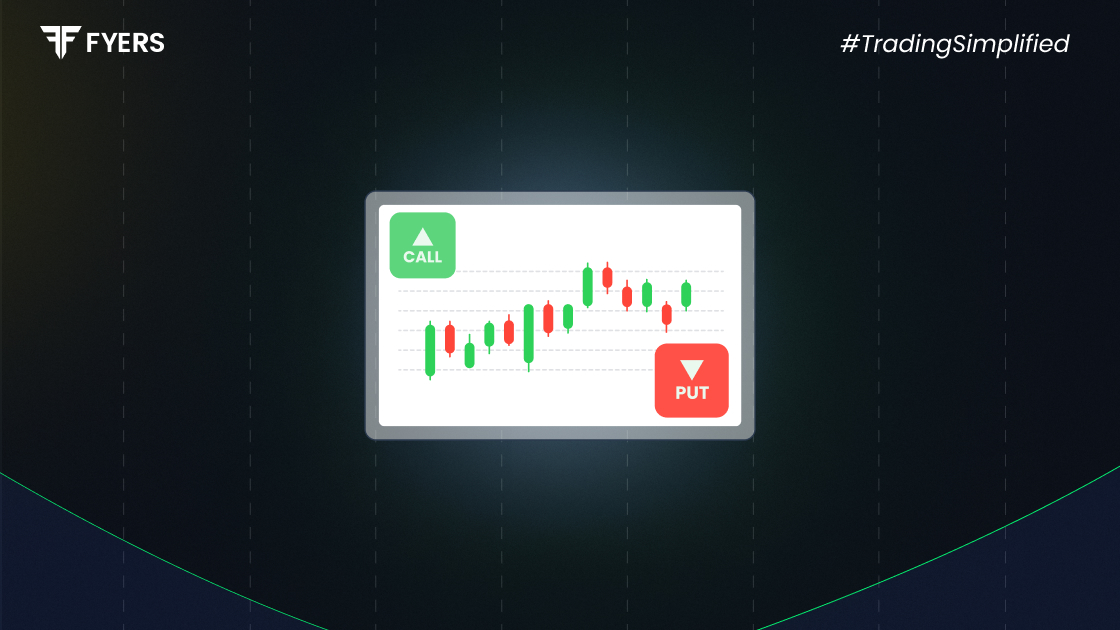

 8 Apr, 2025
8 Apr, 2025
 4 mins read
4 mins read

Options trading is an exciting part of the stock market that offers flexibility, leverage, and hedging opportunities. At the heart of options trading are two key instruments - Call and Put options. If you're a beginner wondering what call and put options are, this article will break down everything you need to know: their meanings, differences, how they work, and real-world examples.
In the share market, options are a type of derivative contract that gives the buyer the right but not the obligation to buy or sell an underlying asset at a predetermined price within a specific time. The two main types of option contracts are:
Call Options
Put Options
These options can be used to speculate on the direction of the market or hedge against existing positions.
Understanding call and put options in share market terms helps you grasp how traders make profits even in falling markets.
A call option gives the buyer the right (but not the obligation) to buy a stock or asset at a certain price (called the strike price) before a specified expiration date.
Traders buy call options when they believe the price of the stock will rise in the future.
A put option gives the buyer the right (but not the obligation) to sell a stock or asset at a specified strike price before the expiration date.
Put options are purchased when traders expect the stock price to fall.
The difference between a call and a put option lies in the direction of the trade:
|
Feature |
Call Option |
Put Option |
|---|---|---|
|
Right to |
Buy the asset |
Sell the asset |
|
Market View |
Bullish (expecting price to go up) |
Bearish (expecting price to go down) |
|
Profit When |
Market price > Strike price |
Market price < Strike price |
|
Risk |
Limited to premium paid |
Limited to premium paid |
Understanding this difference helps traders decide which strategy suits their market view.
Once you understand the basics, the next step is learning how call and put options work in the share market.
Let’s say you expect stock XYZ to rise. You buy a call option with a strike price of ₹100, expiring in one month. If the stock price rises to ₹120, you can exercise the option and buy at ₹100, then sell at ₹120—making a profit (minus the premium paid).
Suppose you expect stock ABC to fall. You buy a put option with a strike price of ₹200. If the stock falls to ₹160, you can sell it at ₹200 (using the option), making a profit (minus the premium).
This is how does put option works - it profits from declining stock prices.
Real-life examples make the concepts easier to understand.
Imagine stock A is trading at ₹500. You buy a call option with a strike price of ₹520 for a premium of ₹10. If the stock rises to ₹550, you can exercise the call and buy at ₹520. Your profit = ₹550 - ₹520 - ₹10 = ₹20 per share.
Stock B is trading at ₹300. You buy a put option with a strike price of ₹290 for ₹8. If the stock falls to ₹260, you can sell at ₹290. Your profit = ₹290 - ₹260 - ₹8 = ₹22 per share.
These examples of call and put options illustrate how traders use options to earn profits based on market movements.
To determine potential gains or losses:
Call Option Payoff
Profit = (Market Price - Strike Price) - Premium
If the market price is less than the strike price, you let the option expire and lose only the premium.
Put Option Payoff
Profit = (Strike Price - Market Price) - Premium
If the market price is higher than the strike price, you let the option expire and lose only the premium.
These calculations help assess risk and reward before entering a trade.
Call and put options offer powerful strategies in the share market - allowing you to profit in both rising and falling markets. While call option centres on buying when prices rise, a put option is about selling when prices drop. By learning the difference between call and put option, how they work, and studying call and put options examples, you can make informed decisions and better manage your trading strategies.
A call option gives you the right to buy, while a put option gives you the right to sell. The call is for bullish expectations, and the put is for bearish ones.
Buy a Call option if you believe the stock price will go up.
Buy a Put option if you expect the stock price to fall.
The price of options (also called premium) is influenced by:
Current stock price
Strike price
Time to expiration
Volatility of the stock
Interest rates
Yes, many brokers like FYERS offer call and put option trading online through platforms integrated with the stock market. Make sure you understand the risks before you start.
Yes, but it’s important to start with small trades, learn how call and put options work, and always consider the risk of losing the premium paid.
Calculate your Net P&L after deducting all the charges like Tax, Brokerage, etc.
Find your required margin.
Calculate the average price you paid for a stock and determine your total cost.
Estimate your investment growth. Calculate potential returns on one-time investments.
Forecast your investment returns. Understand potential growth with regular contributions.